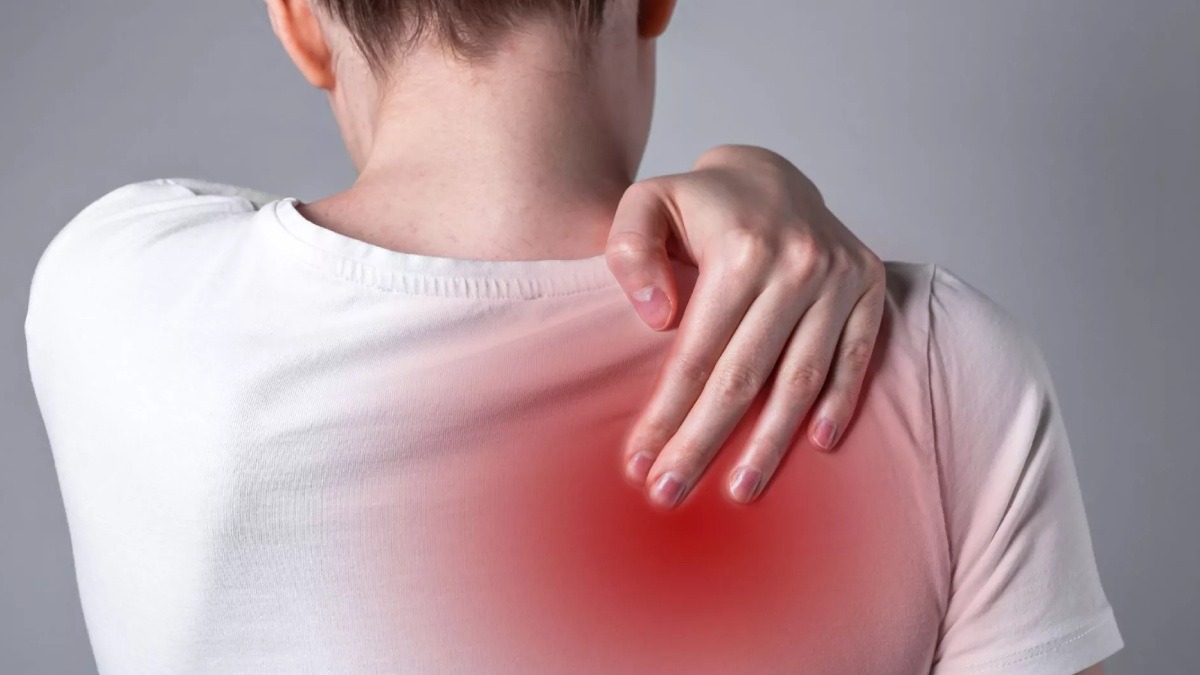Neck and shoulder pain are common complaints that can significantly affect daily activities and quality of life. One often overlooked cause of this discomfort is the presence of trigger points in the muscles. Understanding what trigger points are, how they cause pain, and the methods to treat them can provide relief and improve function.

What Are Trigger Points?
Trigger points are hyperirritable spots in skeletal muscle that are associated with palpable nodules in taut bands of muscle fibers. These points can be tender to touch and may cause referred pain, meaning pain felt in another part of the body away from the trigger point itself. They can develop due to muscle overuse, injury, poor posture, or stress.

How Trigger Points Cause Neck and Shoulder Pain
- Referred Pain:
- Trigger points can refer pain to other areas. For example, trigger points in the upper trapezius muscle can cause pain that radiates to the neck and shoulder area, as well as up the back of the head, causing headaches.
- Muscle Tightness:
- Trigger points can cause the muscle to become tight and shortened, which can lead to a restricted range of motion and a sensation of stiffness in the neck and shoulders.
- Nerve Compression:
- Tight muscles with trigger points can compress nearby nerves, leading to numbness, tingling, or weakness in the affected area, often seen in the arms and hands when the neck and shoulder muscles are involved.
- Postural Changes:
- Persistent trigger points can alter posture by pulling the body into unnatural positions to compensate for the discomfort, leading to further muscle strain and pain in the neck and shoulders.

Common Muscles with Trigger Points Causing Neck and Shoulder Pain
- Upper Trapezius:
- This muscle runs along the back of the neck and shoulders. Trigger points here can cause pain in the neck, shoulders, and head.
- Levator Scapulae:
- Located at the side and back of the neck, this muscle lifts the shoulder blade. Trigger points can cause neck stiffness and pain between the shoulder blades.
- Scalenes:
- These muscles are on the sides of the neck. Trigger points can refer pain to the chest, shoulder, arm, and hand.
- Sternocleidomastoid:
- This muscle runs from the sternum and clavicle to the mastoid process behind the ear. Trigger points can cause pain in the front of the neck, jaw, and head.
- Rhomboids:
- These muscles are located between the shoulder blades. Trigger points can cause pain in the upper back and between the shoulder blades.

Symptoms of Trigger Points in the Neck and Shoulders
- Localized Pain: Tenderness or pain at specific points in the muscle.
- Referred Pain: Pain radiating to other areas, such as the head, neck, shoulders, and arms.
- Muscle Tightness: A feeling of tightness or stiffness in the neck and shoulders.
- Reduced Range of Motion: Difficulty moving the neck or shoulders freely.
- Numbness or Tingling: Sensations of numbness or tingling in the arms and hands due to nerve compression.

Diagnosis of Trigger Points
Diagnosing trigger points typically involves a thorough physical examination by a healthcare provider. Key diagnostic criteria include:
- Palpation: Feeling for taut bands of muscle and tender nodules.
- Referred Pain Pattern: Identifying pain patterns that correspond to known trigger point referral zones.
- Range of Motion Assessment: Evaluating limitations in movement and muscle tightness.
- Patient History: Discussing symptoms, including the onset, duration, and activities that exacerbate the pain.

Treatment of Trigger Points
- Manual Therapy:
- Massage Therapy: Techniques such as deep tissue massage, myofascial release, and trigger point massage can help alleviate pain and release muscle tightness.
- Chiropractic Care: Adjustments and manipulations can help reduce muscle tension and improve range of motion.
- Physical Therapy: Exercises to stretch and strengthen muscles, as well as techniques like ultrasound and electrical stimulation, can be beneficial.
- Trigger Point Injections:
- A healthcare provider can inject a local anesthetic, saline, or dextrose directly into the trigger point to alleviate pain and reduce inflammation.
- Dry Needling:
- Similar to acupuncture, this technique involves inserting thin needles into trigger points to release muscle tightness and reduce pain.
- Heat and Cold Therapy:
- Applying heat can help relax tight muscles, while cold therapy can reduce inflammation and numb pain.
- Exercise and Stretching:
- Regular exercise and stretching can help maintain muscle flexibility and strength, preventing the recurrence of trigger points.
- Ergonomic Adjustments:
- Ensuring proper posture and ergonomics at work and during daily activities can reduce strain on the neck and shoulders.
- Stress Management:
- Techniques such as yoga, meditation, and deep breathing can help reduce overall muscle tension and stress, which can contribute to trigger point formation.

Conclusion
Trigger points in the neck and shoulder muscles can cause significant pain and discomfort, but understanding their causes and treatment options can lead to effective relief. Traditional therapies such as manual therapy, exercise, and ergonomic adjustments, combined with innovative treatments like Prolotherapy and PRP therapy, offer comprehensive solutions for managing and alleviating trigger point-related pain. If you are experiencing persistent neck and shoulder pain, consult with a healthcare provider to explore the best treatment options for your condition. At [Your Clinic/Organization Name], we are dedicated to providing comprehensive care and advanced treatments to help you achieve optimal health and well-being.





